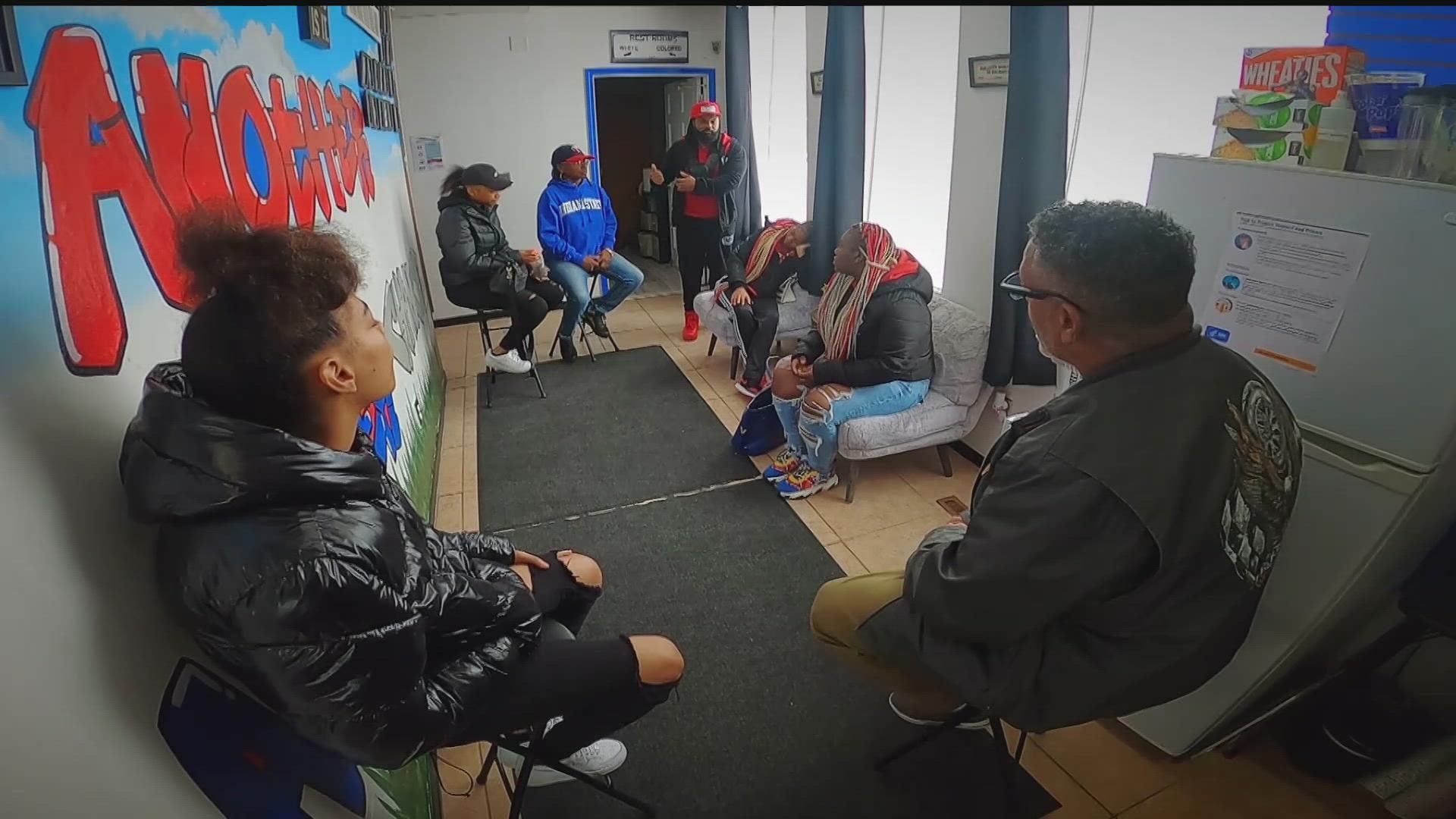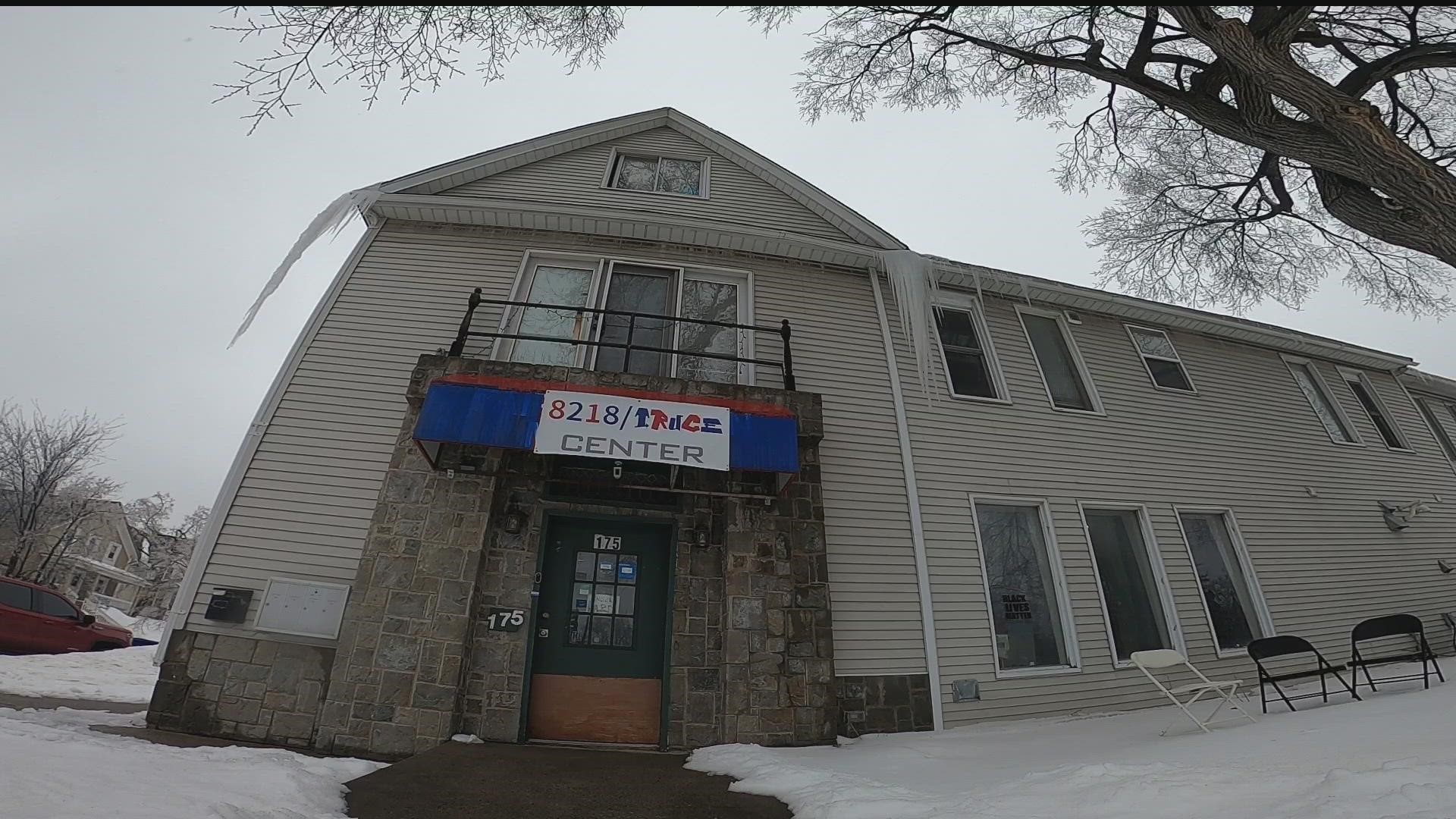ST PAUL, Minn. — On one level, St Paul's 8218 Truce Center is exactly what it sounds like: A place dedicated to helping young people navigate their differences.
"We work with law enforcement, social media, word of mouth, whatever it takes to find the individuals that are fighting and shooting with each other and get them to try to sit down," said founder Miki Frost. "Let's try to work it out before it escalates to this wall that we got right here."
The wall that Frost is refencing, contains roughly 70 framed photos of community members who died from gun violence. It's a wall he's struggled to keep up with in recent months.
"I probably have about 40-50 more pictures that I still need to put up," Frost said.
That's because hanging pictures takes a back seat, when even safe spaces like his are threatened by overlapping violence, trauma and retaliation.
He spoke to KARE11 in January, after the shooting outside the nearby Oxford Community Center literally interrupted a de-escalation class he was holding for teens due to previous violence and trauma.
"These kids, they don't feel safe at all," Frost said. "It doesn't matter where they are right now. A lot of people think that a kid wants to sit and play a video game all day long just because they're lazy or don't want to go outside, but the truth is they are scared to go outside. A lot of these kids fear going to school, so they act up so they don't have to go to school."
He knows because he and his staff have heard and seen it first hand. The 8218 Truce Center has teams that spend limited hours inside some of the St. Paul schools rocked by recent violence, including Central and Harding High Schools.
Frost: "I've heard kids say, 'I carry a gun to school because there's no protection at school. I also know kids who say the first time they've seen a gun is inside of a school.'"
Kent Erdahl: "You're organization has had a presence in schools. To be clear, where do you stand with police in school and SRO's?"
Frost: "I believe that we all need to work together. The problem that is in these communities is so large that an organization such as my own, cannot do it alone, the police department cannot do it alone, the school board and the system cannot do it alone. We all need to learn to do some things together."
To make matters even more challenging, he says the cycle of violence and retaliation has become more fractured than many adults, even those who grew up in the neighborhood, can understand.
"It's not the traditional gangs that once existed, but just like cliques. Groups of kids," he said. "Some are struggling at home, some don't even have a home, so they are staying with the cliques because they have no where to go. Maybe there is this one house where all of them can go and kind of stay at, so they go there."
He says those kinds of dynamics, layered with trauma that keeps compounding, means that it's even more important for the adults in the community to work together, instead of disagreeing on the perfect solution.
"We just need that chance to feel like we're connected again," he said. "It's going to take a little bit of everything to fix this, and until we realize that no one person has that magical answer, then that's when we'll for sure start to see change in these communities."
Watch more Breaking The News:
Watch all of the latest stories from Breaking The News in our YouTube playlist:


